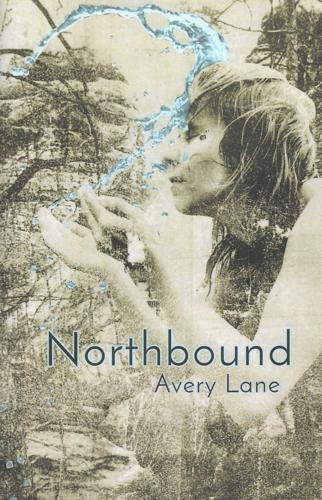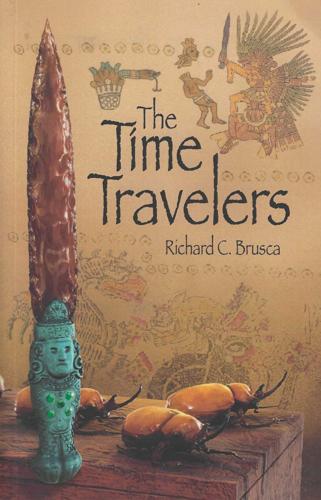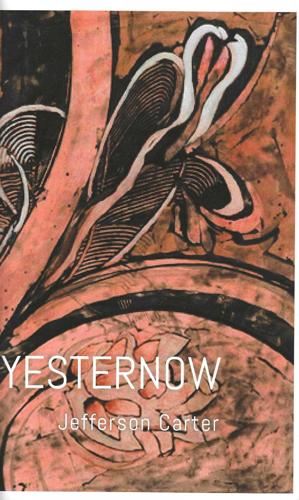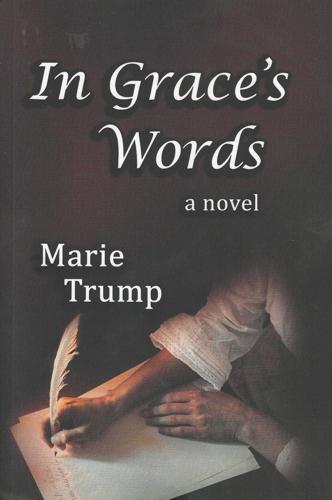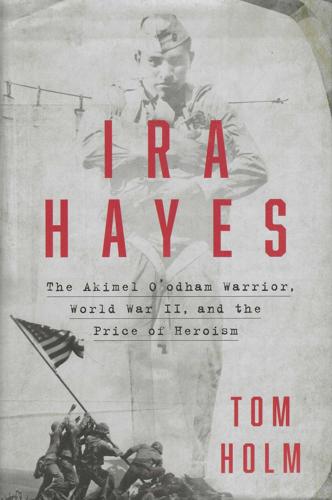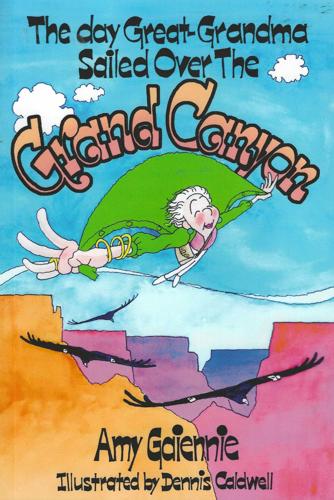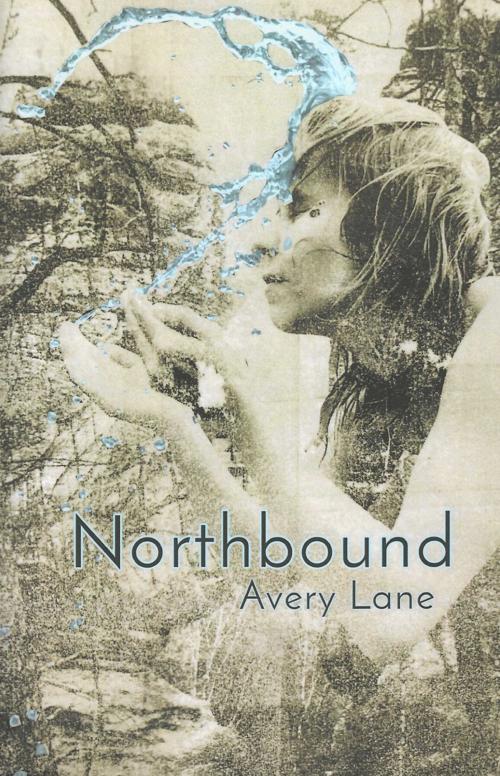“Northbound” by Avery Lane. Finishing Line Press. 36 pages. $15.99.
This collection of poems by Tucsonan Avery Lane deserves kudos on two fronts: first, it’s a powerful first chapbook; and second, it’s the by-product of the grueling 800-mile thru-hike Lane made of the Mexico-to-Utah Arizona Trail.
A sort of desert-hewn 21st-century romantic, Lane inhabits and draws from the nature she’s traversing, and often melds external and international worlds. At her departure point, she deplores the border wall and wonders about how infrared imaging technology detects crossers: can a deer be mistaken for a person, are crossers “following the/distribution of grasses, or … a northern star? … how does one measure the heat of a small body/held to the center of another?” By the end, she extols the hike itself: “… walk until something vital snaps./walk until a song forms. Walk until you’re humming….”
She writes on the nature of poetry and writing: “Each poem is a world built. …We return and walk/around in poems, but we will … never be/who we were, when we built them.” And she translates for us the physicality of the trek: “Wind and walking/set loose one thousand/little dams in me, flooding/the foothills with gloom./I will melt and splinter,/…Until I am as/clean and unburdened as bone.”
Most forceful are the passages in which Lane melds internal and external. From “Basin Post Fire”: “I am on land/healing itself. I am inside/a ghost resurrecting. …” And, from “Leaving Strawberry”: “Cardinals become my body; I am all/and beak. I am the flitting wound/against the cone-laced face/of the hills, climbing onto/the rim of this land.”
Muscled and tough, but celebratory, this is an impressive poetic debut.
— Christine Wald-Hopkins
“The Time Travelers” by Richard C. Brusca. Quetzalcoatl Press. 267 pages. $12.95.

To many folks (count this reader among them), the notion of reading straight history, archeology, anthropology and space-time theory can make their eyes glaze over. Stick those disciplines into a story, however, and you’ve got focus. Such is the case with “The Time Travelers,” Tucson zoologist, biologist and sea and desert naturalist Richard C. Brusca’s entertaining, imaginative — plus informative — Mexican time-juggling novel.
The story’s two primary settings are Tenochtitlán (Aztec Mexico City), 1519, and Mexico City, 2026. At issue is a mysterious jade and obsidian knife, unearthed in Mexico City’s historic center, built atop a destroyed Aztec temple. When the discovery is made known and the knife’s being prepped for exhibition at the anthropology museum, a secret society that has guarded ancient Aztec rituals and relics for centuries is catalyzed to spill blood to unleash an Aztec prophecy and upend the history of the world.
At thematic issue is the nature of time. We think of time as linear, but there’s no objective proof of that beyond our perceptions, observes Father Mateo, Jesuit priest and member of the secret organization. The Aztecs saw tíme as circular, he continues. And, as another character says, “We all share the same time — past, present and future. What will be revealed is already determined.” What is “already determined” manifests cataclysmically in this book on the Day of the Dead, November 1, 2026.
Brusca’s is a grand story — from the signs that persuaded the seven Nahuatl-speaking tribes to vacate “Aztlan,” (prehistoric Arizona, Utah and the Four Corners), through their migrating south and constructing Tenochtitlan, to Cortez’s destruction of Aztec culture. And it’s a grand read. Especially for anyone spending this week’s Day of the Dead in Mexico City. Not to worry, though, this cataclysm doesn’t occur for another three years.
— Christine Wald-Hopkins
“Yesternow” by Jefferson Carter. Moonstone Press. 27 pages. $10.

Rather like the Miles Davis piece to referred to in the opening poem and title (“Yesternow”), the poems in this Jefferson Carter chapbook thrum through recurring elements and then punctuate, riff-like — unexpected, entertaining. Recurring elements? Wordplay. Politics and the environment. Music and literature. The tribulations of aging. Crankiness. COVID. And in a jazzy, often satiric voice.
There’s no distance between speaker and poet in these poems: When Carter writes about a son’s teasing, “‘O.K.,/Boomer,’ when I refuse to use/the gender-neutral ‘they,’” you know it’s his own son; when he writes, “It’s not the drugs, my doctor says,/it’s my age,” his own “Thin Skin” is the reference.
These are performance pieces. They’re audience-aware, droll, and stand-up-timed. Take this swipe at contemporary revolutionaries: “You’re not gonna/‘tow’ the line?/You’re gonna nip/injustice in the ‘butt’? /… The revolution will/be televised./I’ll watch it/from this balcony,/me, the Anodyne Kid/cheering you on.”
Bravo, Carter! (Word is, poetry audiences don’t finger-snap anymore. Thank goodness.)
— Christine Wald-Hopkins
“In Grace’s Words: A Novel” by Marie Trump. Write Mind, 310 pages. $12.99; $2.99 Kindle.

Grace Johnson was about 14 years old (she didn’t know her actual birthday) before she found out that there was a name — “hazel” — for the color of her eyes. It was a revelation, but it wouldn’t be the last time her new-found friend, Jane, would surprise her. Jane was from the well-to-do Merrick family where learning was valued; there was no end to what Jane knew, and she was happy to share it with Grace, determined that they become sisters. Poor, uneducated and accustomed to the back-breaking labor that was the lot of the residents of the Haven — descendants of slaves who made their way to freedom on the Underground Railroad — orphaned Grace could only marvel.
This very readable book is ultimately a story of transitions and growth, as Grace learns to make her way in the world with the help of the Merricks, who take her in when her grandmother dies. She feels useless unless she’s working — she’s sure this is what her grandmother wanted — but Mrs. Merrick is determined that Grace get an education. For practice reading and writing, she begins to keep the diary that she would maintain lifelong: the narrative moves between an omniscient voice and Grace’s diary entries, where she tells her story in her own words. By age 100, having been a prominent educator herself, her diary contains a lifetime of joys, hardships, successes and love.
Marie Trump, who lives in Tucson, is also the author of “The Merrick Legacy,” where the story of the Merrick Family begins.
— Helene Woodhams
“Ira Hayes: The Akimel O’odham Warrior, World War II, and the Price of Heroism” by Tom Holm. Twelve (Hachette Book Group); 301 pages. $30; $14.99 Kindle.

The arresting cover of this excellent book, by a professor emeritus of American Indian Studies at the University of Arizona, features a photograph of Ira Hayes taken upon his graduation from the U.S. Marine Corp jump school in 1942. The usually modest young man looks straight into the camera, as if ready for whatever lay ahead. But who could have guessed what fate had in store?
Another photograph, superimposed over the first, is Joe Rosenthal’s iconic shot of the Marines raising the American flag on Mount Suribachi during the terrible battle for the Japanese island of Iwo Jima: Hayes is at the left. The AP correspondent’s photo, the basis for the Marine Corps War Memorial in Arlington, Virginia, would make Hayes immortal. It can also, posits the author, be seen as a contributing factor to the young man’s tragic demise of alcohol poisoning and hypothermia in 1955 at the age of 32.
As soon as Rosenthal’s photo landed on FDR’s desk, the press declared it open season on Hayes. So did the government, who embraced the image of a Native warrior as a comrade-in-arms — especially his potential for selling war bonds. For the rest of his life, Hayes would never be long out of the limelight, to his detriment.
The importance of imagery to the war effort, says author Tom Holm, resulted in Ira Hayes being simultaneously venerated and exploited. He was lauded as a hero, a troubling designation he rejected — the real heroes, as his Akimel O’odham upbringing instilled in him, were his fallen comrades. He felt like a fraud. When, post-war, he struggled with what we now recognize as PTSD and fell into alcohol addiction, the press reverted to the racist stereotype of the “drunk Indian,” characterizing Hayes as a savage unwilling to take personal responsibility — a popular cultural preconception that was as insulting as it was inaccurate.
It’s a storyline the author, himself an enrolled citizen of the Cherokee Nation and a Vietnam vet, understands well. Mindful of his own wartime involvement and struggles with PTSD, Holm expertly parses Hayes’s experiences before, during and after the war, viewing them through the lens of Akimel O’odham history, traditional ceremonies and the tribe’s collective trauma from near extinction by famine. In this deeply researched, eloquent volume, Holm treats his subject with the sensitivity and profound understanding that Hayes never received in his lifetime. It is beyond enlightening and a thoroughly compelling read.
— Helene Woodhams
“The Day Great-Grandma Sailed Over the Grand Canyon” by Amy Gaiennie; illustrations by Dennis Caldwell. Published by the author; 30 pages. $5.79; $2.99 Kindle.

When an errant gust of wind picks up bird-like great-grandma and sends her soaring aloft, she assures her startled family that she’s “light as a feather,” before swooping off down the Grand Canyon. Four hours and 200 miles later, they catch up with her at the Canyon’s Desert View entrance to find her regaling a crowd with her mid-air adventure. Flying like a bird, it turns out, isn’t difficult, but landing is, and it might have been much less of a lark if some California condors — great-grandma’s “angels” — hadn’t intervened and delivered her back to terra firma.
In this imaginative, joyfully illustrated children’s book, young readers will enjoy learning about California condors (and birds in general), endangered species, and the interconnectedness of all creatures. And, bird’s-eye view descriptions of the spectacular scenery of the Grand Canyon may encourage a few family road trips. Author Amy Gaiennie, a retired teacher and interpretive park ranger, lives in Tucson, as does illustrator and conservationist Dennis Caldwell.
— Helene Woodhams
It’s no surprise that young children are constantly asking the question “why?”. Research has now shown that children prefer to read books that explain how and why things happen.


